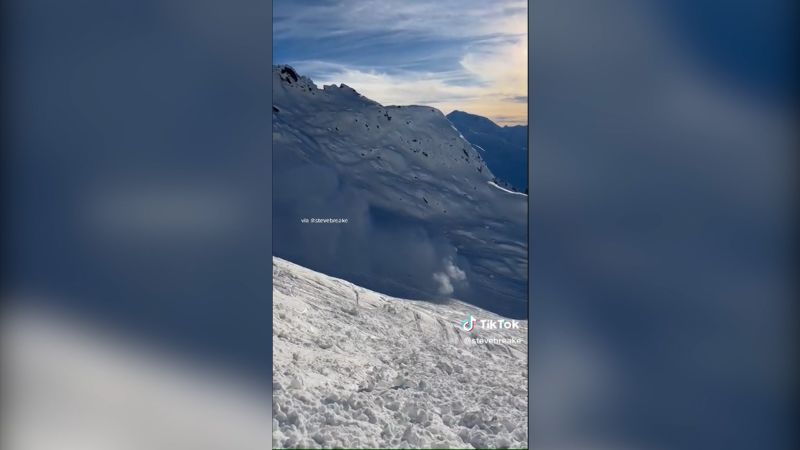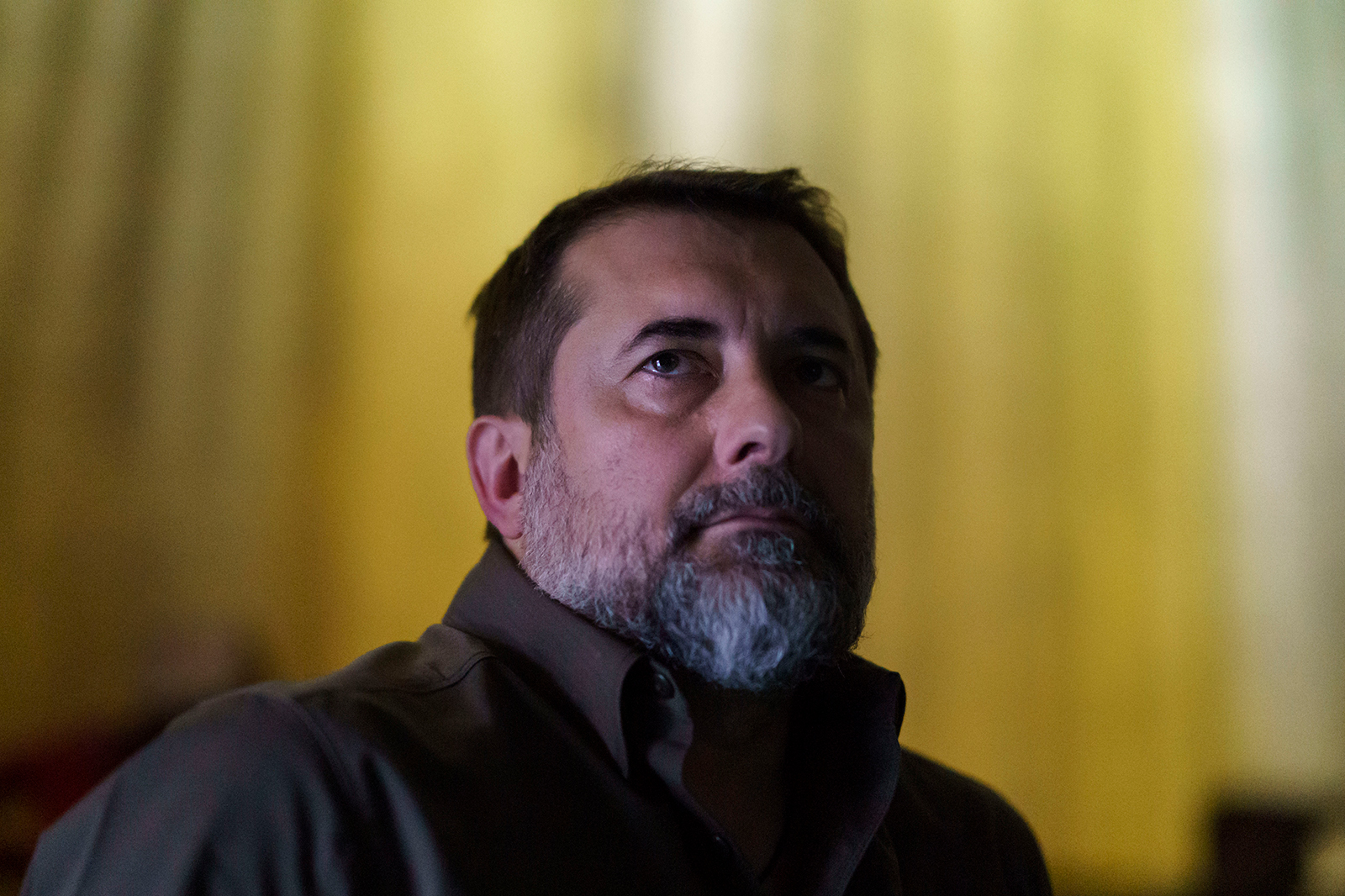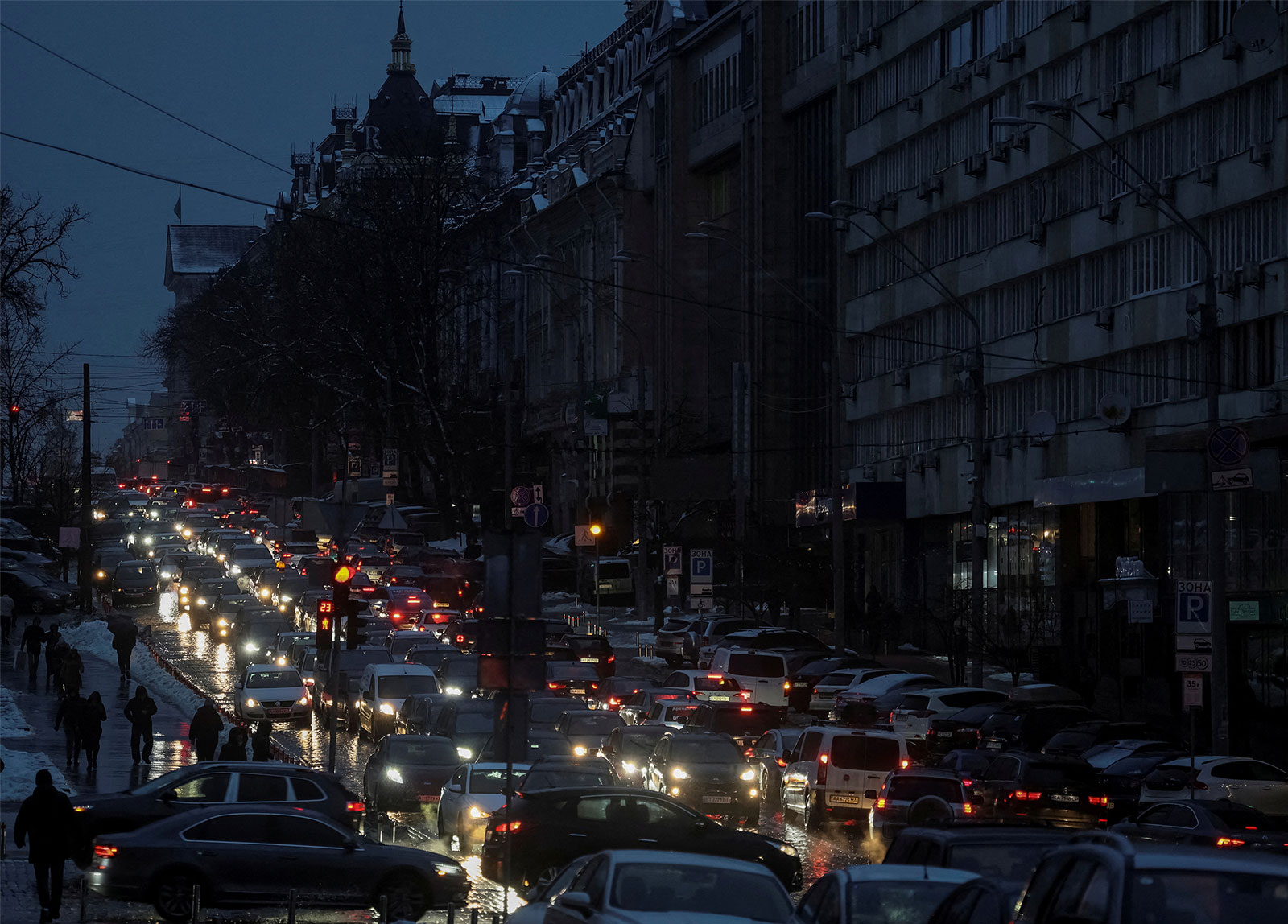Video captures moment avalanche overtakes skiers in Austria

Video captures moment avalanche overtakes skiers in Austria
Skiers who survived a Christmas Day avalanche were caught on camera the moment they were buried in snow.
00:45 - Source: CNN

Video captures moment avalanche overtakes skiers in Austria
Skiers who survived a Christmas Day avalanche were caught on camera the moment they were buried in snow.
00:45 - Source: CNN

Tourists flee amid flash floods at this World Heritage Site
Sudden flooding caused immediate evacuation for tourists visiting a World Heritage Site in Petra, Jordan.
00:48 - Source: CNN

The Ukrainian city of Kreminna, northwest of Lysychansk, continues to experience heavy fighting as the Russian military keeps renewing its forces there, the head of the Luhansk regional military administration, Serhiy Haidai, said Tuesday.
"The Russian occupation troops managed to build a very powerful defense in a month, even a little more. They are bringing there a huge amount of reserves and equipment. They are constantly renewing their forces," Haidai said.
He said the Russian military had suffered a large number of casualties "but they still bring new [personnel], because they understand that if they lose Kreminna, in principle, the entire line of defense will crumble."
CNN has not been able to verify the number of casualties on the Russian side.
Ukrainian President Volodymyr Zelensky acknowledged on Monday evening that the situation on the frontlines in Bakhmut, Kreminna and other areas in the eastern Donbas region is difficult, painful as Russian forces use all resources available to them "to squeeze out at least some progress."
Why Kreminna matters: The town in eastern Ukraine's Luhansk region has been occupied since the spring.
Kreminna lies on a key north-south road from Svatove, which Russian troops had been using to resupply and which became even more important to them after Ukrainian troops took over Kupyansk, a resupply hub to the northwest of Kreminna and Svatove. Losing Kreminna would limit Russia's ability to resupply its troops in the key city of Severodonetsk.
Haidai said the road remained under Ukraine's fire control, which meant there was "no safe and calm way for the occupiers to bring in the equipment or ammunition towards Kreminna using this road," he said.
Ukrainian forces appeared to be on the verge of retaking Kreminna a few weeks ago, but Ukrainian officials said the approaches to the city were difficult because of extensive mining.
"Every meter is difficult, because everything there is mined and they are constantly shelling with large caliber," Haidai said, saying the situation in Kreminna was "radically different from Bakhmut."
"[Russian troops] are trying to shell more powerfully, they have occupied all the forests, they have completely mined everything and no one knows the map of minefields. Therefore, it is very difficult to advance," Haidai said.
The Washington-based Institute for the Study of War, which follows the conflict closely, said information from Russian military bloggers suggests that "Russian forces are pulling troops from various points throughout the theater to fill holes in the Svatove-Kreminna line and compensate for the continued degradation of conventional units."

US Secretary of State Antony Blinken vowed again on Tuesday to work tirelessly with the G7 and other partners to repair, replace, and defend Ukraines energy infrastructure as it faces a tough winter of Russian attacks.
But that effort will not come without challenges.
An initial tranche of US electrical equipment, which a US official told CNN included big items like circuit breakers, relays, disconnectors, arrived in Ukraine more than a week ago part of a multimillion dollar pledge by the Biden administration to help to support Ukraines electrical system.
However, as the US and its partners work to try to supply the capital of Kyiv with the supplies it needs to keep the electricity and heat on this winter, they have had to contend with worldwide supply chain issues, the US official said.
There is a global effort to try to deal with this, the official explained, and the US is working with the private sector to try to narrow the gap in equipment, but with the existing supply chain issues, there is not as much extra supply.
Other challenges: Some of the bigger ticket items that are used in the United States are not compatible in Ukraine, as they are designed to work on different frequency grids, the official told CNN.
The US hopes that the provision of air defense systems will help counter the barrage of Russian attacks on Ukrainian critical infrastructure, so that the equipment provided by the US and partners is not destroyed.
By attacking the infrastructure, the Russians have made defense and recovery of the grid much more complicated, the official explained, because there are so many more places the system can go down than if they were to attack a power plant.
In the short term, the US is trying to locate items the Ukrainians have prioritized, such as large gas generators. These generators would not be used to power individual homes, the US official said, but rather would be used to keep critical utilities such as water and heat on even if the electricity is down.
The official explained that even when the electrical grid is repaired, it cannot immediately be run on full capacity or it risks blowing out, so Ukrainian officials likely will need to keep rolling blackouts until they can ensure the patched electrical grid can sustain itself, the official said.
In 2020, North Korea conducted four missile tests. In 2021, it doubled that number. In 2022, the isolated nation fired more missiles than any other year on record, at one point launching 23 missiles in a single day.
North Korea has fired more than 90 cruise and ballistic missiles so far this year, showing off a range of weapons as experts warn of a potential nuclear test on the horizon.
Though the tests themselves arent new, their sheer frequency marks a significant escalation that has put the Pacific region on edge.
The big thing about 2022 is that the word test is no longer appropriate to talk about most North Korean missile launches they are hardly testing missiles these days, said Ankit Panda, a nuclear policy expert at the Carnegie Endowment for International Peace. Everything weve seen this year suggests that Kim Jong Un is dead serious about using nuclear capabilities early in a conflict if necessary.
The attention-grabbing tests also threaten to set off an arms race in Asia, with nearby countries building up their militaries, and the United States promising to defend South Korea and Japan by the full range of capabilities, including nuclear.
Heres a look back at a year of weaponry and warnings and what could come next.
Of the more than 270 missile launches and nuclear tests by North Korea since 1984, more than a quarter came this year, according to the Center for Strategic and International Studies Missile Defense Project.
Of that total, more than three quarters were recorded after Kim Jong Un came to power in 2011, reflecting the dictators ambitions of which he made no secret, vowing in April to develop the countrys nuclear forces at the highest possible speed.
That lofty goal was reflected in a flurry of testing, with North Korea firing missiles on 36 days this year, according to a CNN count.
For missiles, they set daily, monthly and yearly records, said Bruce Klingner, senior research fellow at The Heritage Foundations Asian Studies Center.
The majority of these tests were cruise and ballistic missiles. Cruise missiles stay inside the Earths atmosphere and are maneuverable with control surfaces, like an airplane, while ballistic missiles glide through space before reentering the atmosphere.
Pyongyang has also fired surface-to-air missiles and hypersonic missiles.
North Korea is literally turning into a prominent operator of large scale missile forces, said Panda. He pointed to recent instances where North Korea fired missiles in response to military exercises or diplomatic talks by the US and its regional allies, adding: Anything that the US and South Korea will do, North Korea can proportionately demonstrate that it has capabilities to keep up as well.
Among the ballistic missiles tested was the Hwasong-12, which traveled more than 4,500 kilometers (about 2,800 miles) in October flying over Japan, the first time North Korea had done so in five years. Another notable missile was the Hwasong-14, with an estimated range of more than 10,000 kilometers (more than 6,200 miles).
To put those distances in context, the US island territory of Guam is just 3,380 kilometers (2,100 miles) from North Korea.
But one particular weapon has drawn international attention: the Hwasong-17, North Koreas most powerful intercontinental ballistic missile (ICBM) to date. It could theoretically reach the US mainland but there are still a lot of unknowns about the missiles ability to deliver a nuclear payload on target.
North Korea claimed to have successfully launched the Hwasong-17 in March for the first time. However, South Korea and US experts believe the test may have actually been an older and less advanced missile.
The Hwasong-17 was tested again in November, according to North Korean state media, with Kim warning afterward that the country would take more offensive action in response to enemies seeking to destroy peace and stability in the Korean Peninsula and region.
Since early this year, the US and international observers have been warning that North Korea appears to be preparing for an underground nuclear test which would be its first since 2017.
Satellite imagery has shown new activity at North Koreas nuclear test site, where the country has previously conducted six underground nuclear tests. It claimed its most recent test was a hydrogen bomb, the most powerful weapon Pyongyang has ever tested.
That 2017 nuclear test had an estimated yield of 160 kilotons, a measure for how much energy the explosion releases.
For comparison, the US atomic bombings of Hiroshima and Nagasaki, in Japan, yielded just 15 and 21 kilotons respectively. The US and Russia have performed the most explosive tests in history, yielding upwards of 10,000 kilotons.
Its not clear exactly how many nuclear weapons North Korea possesses. Experts at Federation of American Scientists estimate it may have assembled 20 to 30 nuclear warheads but its ability to detonate them accurately on the battlefield is unproven.
Though there had once been hopes of a diplomatic breakthrough in 2019 after landmark meetings between Kim and then-US President Donald Trump, those were dashed after both leaders walked away without having struck any formal denuclearization agreements.
US-North Korea relations have nosedived since then, with Kim in 2021 announcing a sweeping five-year plan for modernizing the Norths military, including developing hypersonic weapons and a nuclear-powered submarine.
This year is an extension of that vision, with North Korea working toward developing its own strategic nuclear deterrent as well as nuclear options in any conflict on the Korea Peninsula.
There are a few possible reasons why this year has been so active. Some experts say Kim could have felt empowered to act while the West was preoccupied with the war in Ukraine. Panda, the nuclear expert, added that tensions tend to flare when South Korea has a conservative government which has been the case since May.
North Koreas aggressive acceleration in weapons testing has sparked alarm in the region, pushing its exposed neighbors Japan and South Korea closer to Western partners.
The US, South Korea and Japan have held a number of joint exercises and fired their own missiles in response to Pyongyangs tests. The US stepped up its presence in the region, redeploying an aircraft carrier into waters near the peninsula, and sending top-of-the-line stealth fighter aircraft to South Korea for training. Meanwhile, the Quad countries a grouping of the US, India, Japan and Australia have deepened military cooperation, with their leaders meeting in May.

Individual governments have also taken dramatic action, with Japan saying it will double its defense spending, the pacifist nations biggest military buildup since World War II.
But experts have warned that this rapid militarization could fuel instability across the region. And theres no clear end in sight; the US and South Korea have more joint exercises planned in the spring, which could propel North Korea to continue firing tests just to show their displeasure, said Klingner.
He added that negotiations are unlikely until Kim has further developed his weapons, when in his mind, hed be coming back to the table in a position of strength.
Each of the lanes of the road, theyve been improving their capabilities, both nuclear and missile, he said. Its all very, very worrisome.